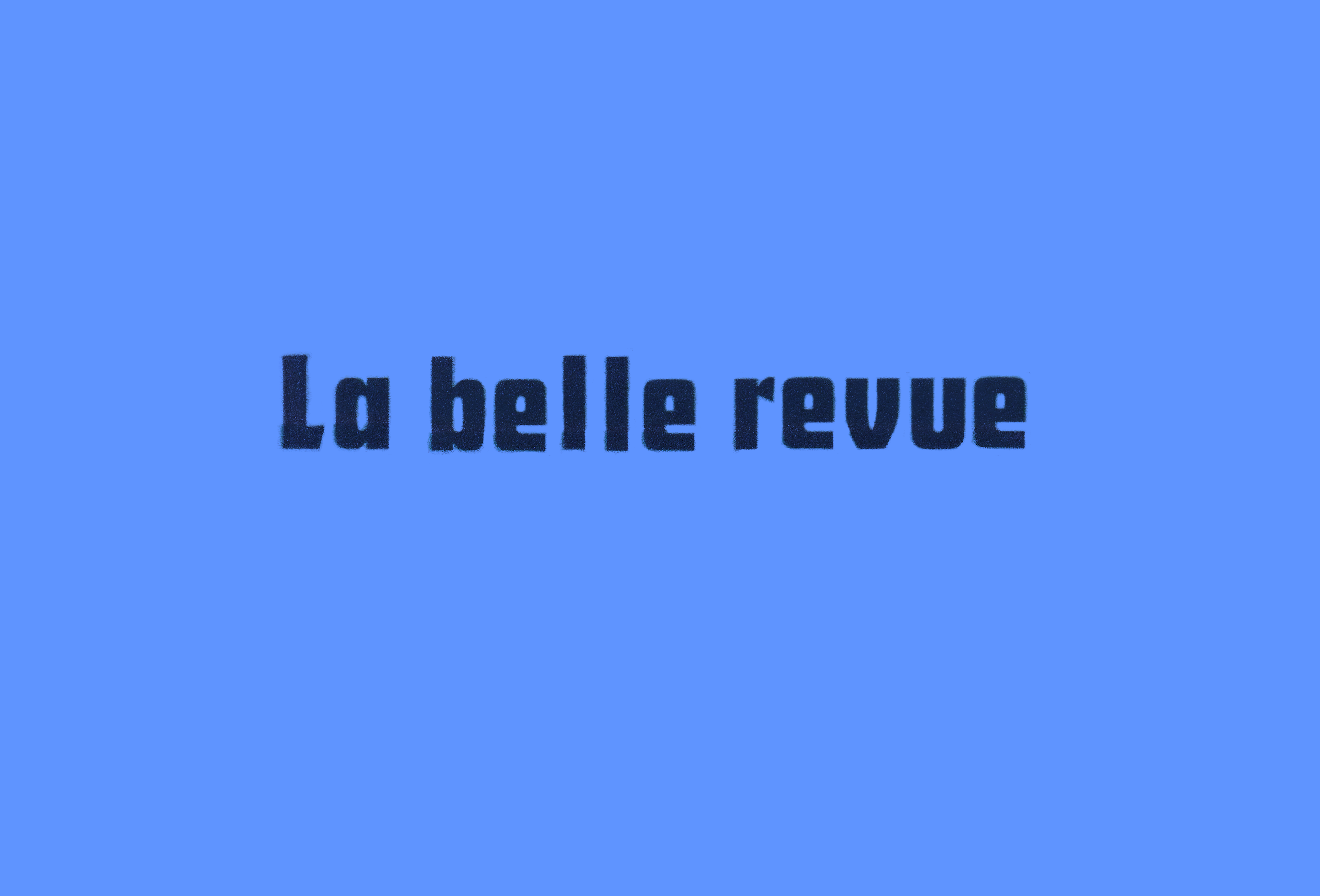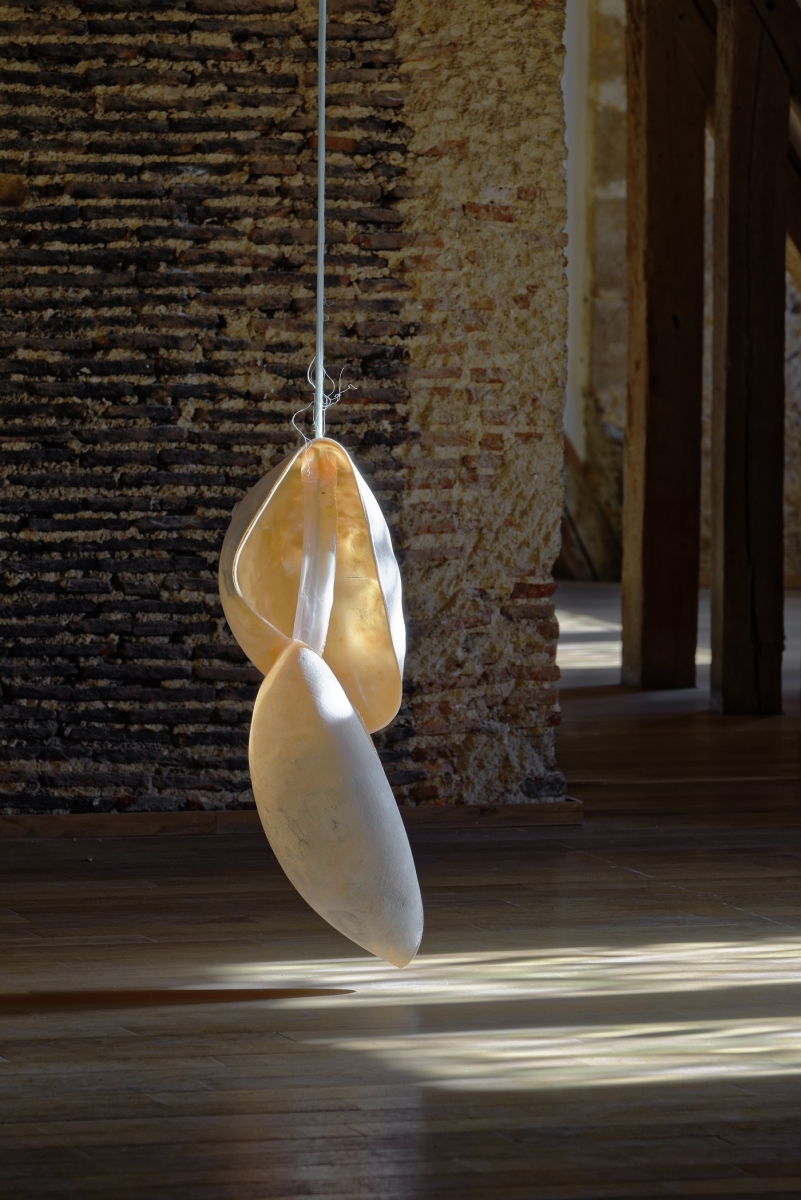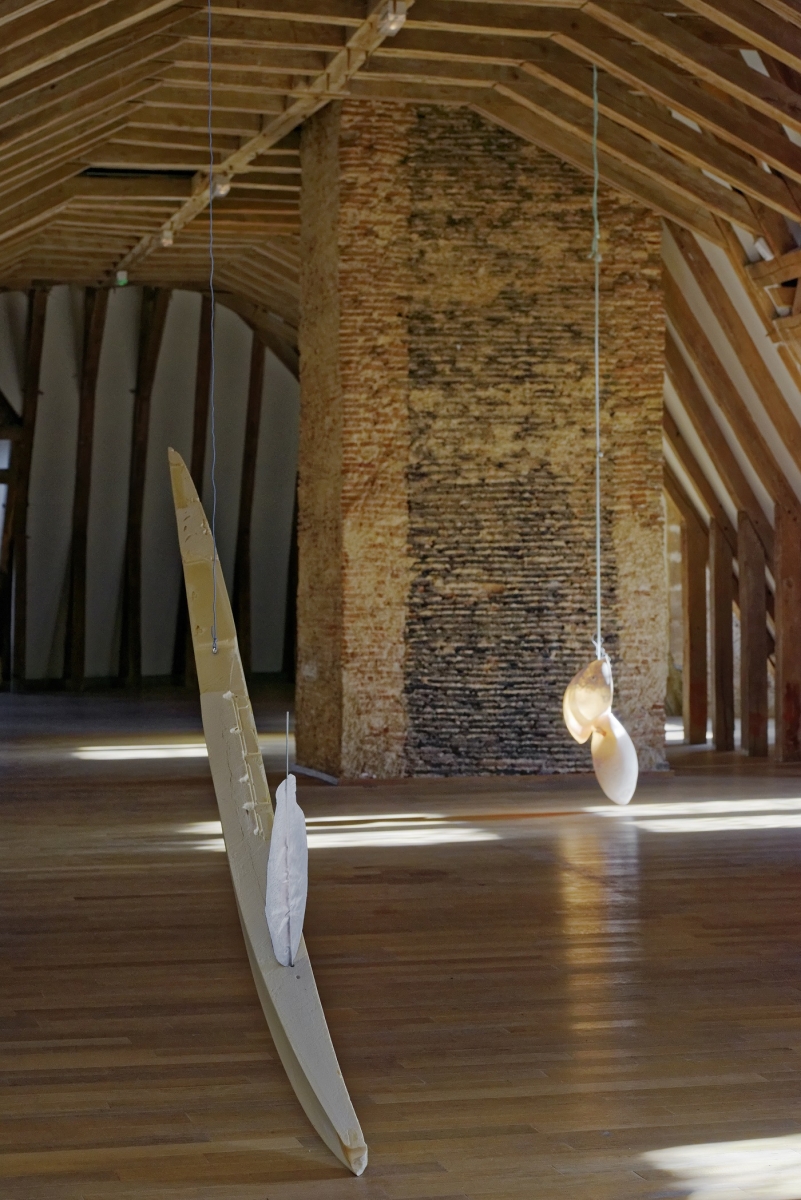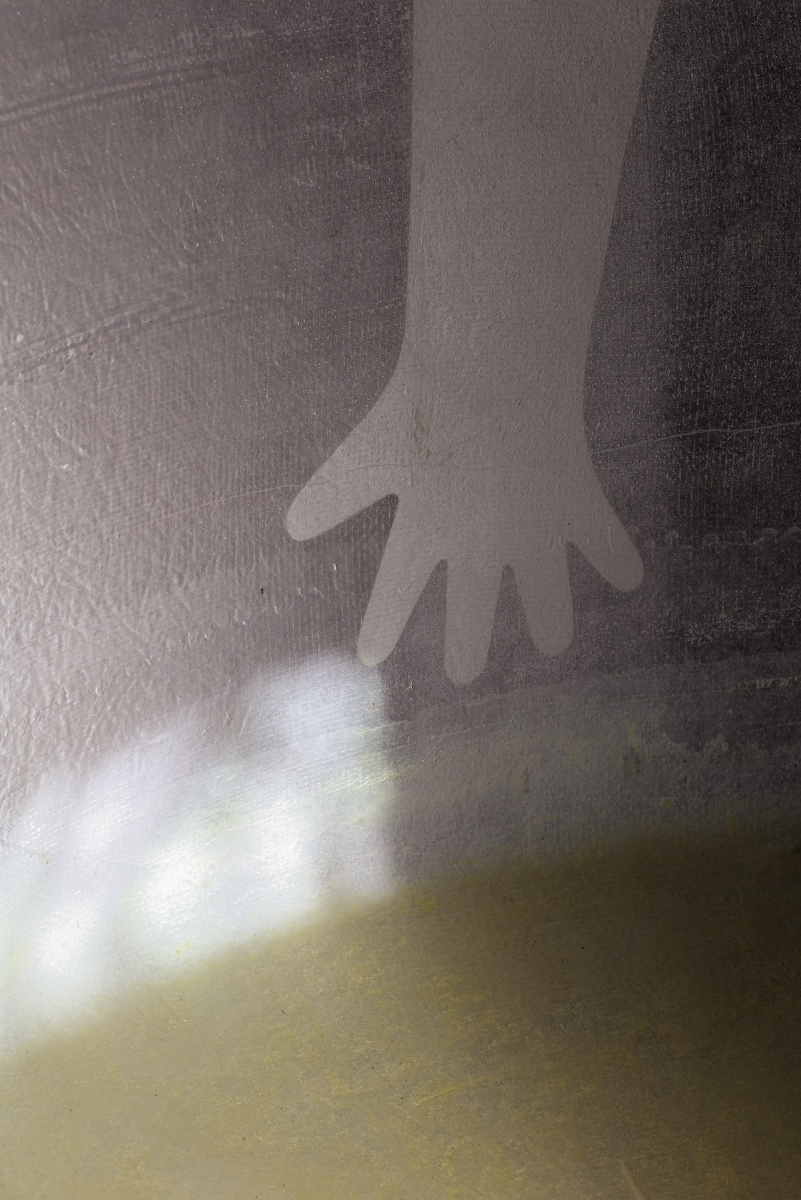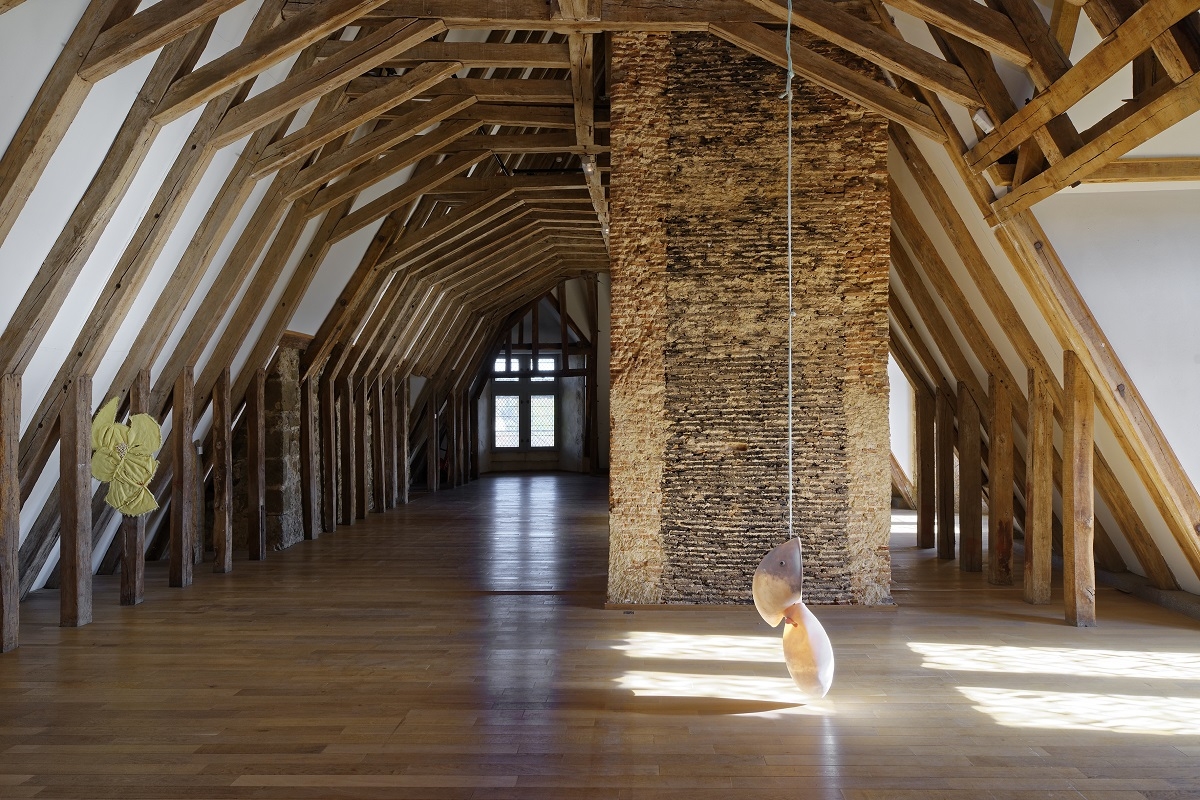Within an hour, it’s over; you’ll see nothing more. Three hours of an afternoon only, but the night falls early over the Vallée de la Graine and there is no electrical lighting on this floor of the castle. Already the sculptures become shadows hung from the woodwork, ready to sink into the darkness. Within an hour, they will close the room and the sculptures will go to sleep with the chickens.
It’s like a score: in the nave, a stave on which notes are successively strung or tempos whose height and position in the space appear to have been set to produce a particular sound or a more or less emphatic silence. They are entitled dress, cradle, heart, spawning, frost, dregs, and core. The dregs are also an image that they might compose together, like the sediment remaining at the bottom of a glass of wine, a waste product that lingers. The elements that make up the sculptures are identified progressively, hung from different places on the timber framework, resting on other parts of the wooden floor or beams. Usually, they lie at the margins of farms, on the flanks of the roadside, or in riverbeds. In particular, there is a silo, of which at first we only perceive a gaping half, a farmer’s rolled-up coveralls hanging by one leg, or a bike helmet with only the polystyrene layer remaining. We manage to recognise these things despite their slightly transformed, fragmented appearance. After several actions of sandpapering and cutting out, they have in fact become skins. A translucent, slightly yellowing plastic membrane for the pieces of empty silo, a thicker, pink dermis that makes this cut-out buoy resemble an open heart, run through by a thick rubbery artery. Like the shed skins of vipers that you find on the edges of tracks, when you look at them in the light, you can nearly see through them.
In the past, depending on whether they served as a seed reservoir or protective gear, these objects once resided in the interface between what we call nature and those who plant the seed, treat, and compose it. These farm tools, eventually abandoned, have been recomposed in turn and subsist only in the exhibition through contact with imitation fauna and flora. The fish nibbling at the moss of the plank is fake, the apple that lies at the bottom of the silo is made of plastic, and the chick is a plush toy. It is as if the artist, who, before setting up his studio in the Limousin countryside, used to use more materials sampled from nature (wood, pistils, shells) had only discovered imitations in the region. In these new works, at any rate, Gyan Panchal seems to have reversed the proportions between natural and plastic materials observed in his previous works and permutated the roles of container and content. We recall sculptures in which nature was more readily used as media, such as the oyster that served as a container for plastic pellets (Untitled, 2008). In Rochechouart, against a beam, it was a few grains of corn that were huddled into the hollow of a fake yellow pelt.
Without immediately knowing why, this silent gathering of objects, among which we almost immediately encounter a sculpture entitled the cradle evokes for me a memory from the Musée des Arts et Traditions Populaires, a display case devised by Georges-Henri Rivère entitled Du berceau à la tombe [From the Cradle to the Grave]. Based on the writing of ethnologist Arnold Van Gennep regarding rites of passage, the display case presented a series of objects in their capacity as adjuvants and symbols of transition from one age to another. The knitted baby’s bonnet and the plates and spoons hanging by nylon threads thus described the parable of an ordinary rural existence. The folklore of these objects is obviously not what made me mention them here, given the extent to which it is absent from the artist’s work. But I am again thinking of the idea of a series in which things are set. Leaving a production channel, the objects found by the artist seem to evolve over a time punctuated not by rites but by rhythms of passage. Gathered, neglected for a while in the indifference of the workshop before being touched up, cut up or arranged, they pass slowly from one status to another. The solidity of their name slips away, they become meteorological states, organs connected to a whole. Therefore the gloved silo becomes the heart, the buoy the frost, and the forgotten thing a work of art.
The path of the sun that leads it to traverse the stained-glass windows of the room for a few hours and to modify the colours and surfaces of the sculptures will in turn trace a different rhythm, one of cyclical transitions.
In an hour, we will no longer see anything and tomorrow when it’s light we will have to attempt to break the orb again, to clear a path through the studio, to roll up the ditches.
